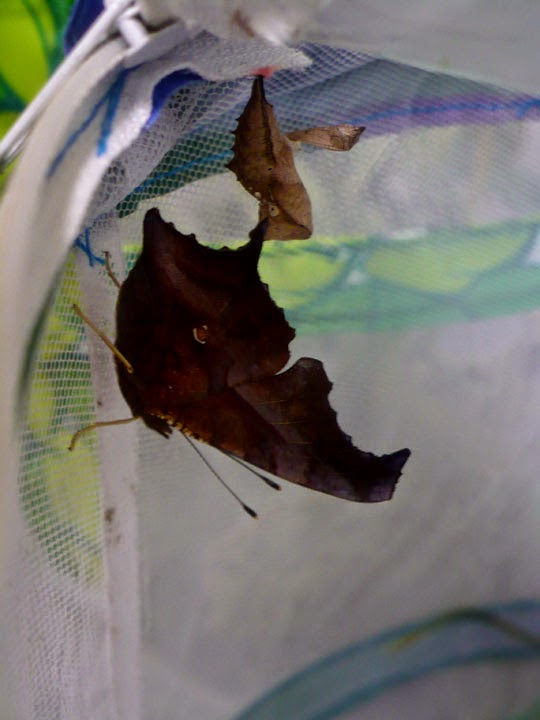Hard to believe it is already September. The summer went by way too quickly, but i'm looking forward to slowing down bit. i've neglected my crafting all summer and am ready to start picking it up again.
End of August and beginning of September, my tomatoes began to succumb to the early blight and septoria leaf spot. i picked the remaining tomatoes and pulled almost off of the plants. i still have a couple in pots, and a couple hanging on in a different garden, but i don't expect to get much from them.
i'm still getting a few summer squash, but pulled most of the squash plants too. i put in new plants in July, but the squash borers killed most of them before they been started blooming. i have two surviving plants, but one is starting to show signs of mosaic virus so this might be the end of my summer squash this year. Tomatillos are starting to ripen and my peppers re finally starting to produce.
i planted a ton of sweet peppers again this year. i've been watching them closely waiting for them to start to change color. i always plant California wonder and they do really for me. They spend the first half of the summer looking a bit stunted, than once August hits they take off! They are now loaded with blooms, baby peppers, and fat green peppers waiting to ripen. They freeze really well, and i like to dice them or cut them in strips to use in all kinds of recipes.
My winter squash struggled at the beginning of the summer and then made a comeback near the end of August. i cut vine borers out of the stems really early July and didn't expect them to make it. My pumpkins did extremely well and their vines took over the patch. It wasn't until they began to die back that found the acorn and butternut squash. i also planted Red kuri, Delicata and Galeux D' Eysines but the vines died before they ever matured. i have one mystery vine that keeps producing small round yellow squash, but they rot before the mature and i haven't figured out which variety it is yet. i'm hoping at least one of them will make it to maturity just so i can figure out what it is.
Last year voles destroyed my sweet potato patch, but because they were just eating the potatoes underground, the plants continued to look healthy and i didn't have any idea about the voles until i went to dig the plants. This year, i've been digging them up and checking them constantly. i pick off any tubers that are a good size and leave the rest to grow bigger. i've dug about 40 lbs so far, and still have lots in the ground. i think the rest will do fine if i leave them until right before frost.
Apples!! Apples are a special treat, because we do not get them every year. Some years are good for peaches, and some years are good for apples. This year we got very few peaches because of a late frost, but the apples did fantastic. Kenan has picked probably 2 bushel so far, and i've been canning and freezing applesauce a fast as i can. i also made a couple batches of apple butter. These apples do not store well, they often have worms on the inside and have to be process quickly or they begin to rot within a week. i look forward to pulling out some of this applesauce in the middle of winter. :)
This spring i was getting mostly white eggs and really wanted some color variation. i purchased new chicks this spring, but have had to wait all summer for them to start laying. Yesterday i collected these from the nesting box. The large brown egg on the left is from a Blakstar hen, the green one came from my Olive egger. The pink one on the right is brand new from my Tetra tint, this is her first egg and it's a pale pink. The white egg came from one of my wild girls, and the speckled on in the center is a complete mystery. i'm guessing it had to come from one of the Cream legbar mix, but i haven't seen either of them in the nesting boxes yet. i'm hoping at least one of the CLB mix will lay blue eggs. Both of my Black Copper Marans ended up being Cockerels, so i'm still on the lookout for a BCM hen. Marans lay really dark brown eggs. i'm really happy with the variety of eggs i am getting right now, and am eager for the other new pullets to begin laying.
i've been working this last week to clean out the spring and summer garden, and get the fall garden planted. i put in broccoli, cauliflower, purple cabbage, bok choy, kale, lettuce, spinach, peas, beets and carrots. i have some things already planted, others started in containers and i keep planting more every time i go outside. The weather has already begun to cool down, so i'm starting to slow down as well.
Although i'm never really ready for winter, i feel really good about the amount of food i've put up this year. Especially since this time last year we were living in an RV, with no room to can or to store food. i'm not yet done with the garden, but i've lost that manic urgency to grow as much as i can. i have never liked the fall and winter, but i feel myself falling into the natural rhythm of the season and because that i am learning to embrace it.































